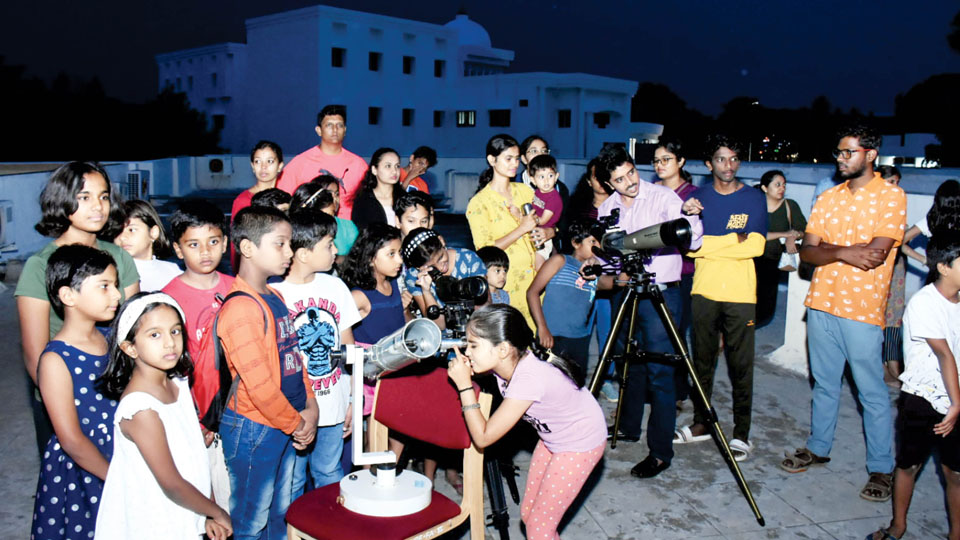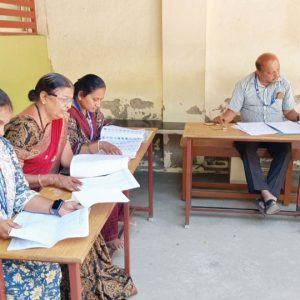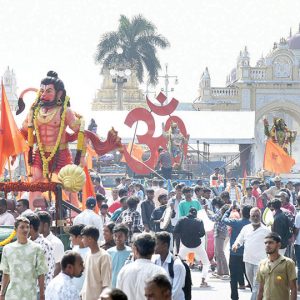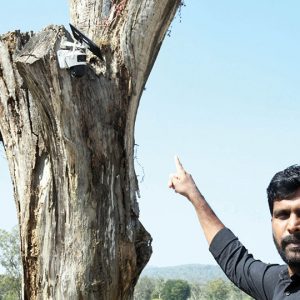COSMOS organises ‘Sky Watch’ for children to clear misconceptions about solar and planetary systems
Mysore/Mysuru: Natural phenomena like solar eclipses, lunar eclipses and full moons have caused fear, inspired curiosity and have been associated with myths, legends and superstitions throughout history. Even today, an eclipse of the Sun is considered a bad omen in many cultures. But they are astronomical events and natural and there is no basis for blind belief, opined N. Amoghavarsha, Project Associate, Cosmology Education and Research Training Centre (COSMOS), Mysuru.
He was speaking at a programme ‘Sky Watch’ organised by COSMOS and Indian Institute of Astrophysics (IIA) recently at Vijnana Bhavan. The aim of such programmes is to increase students’ knowledge of the solar system, planets, stars, celestial bodies, constellations, phases of Moon, eclipses, with which many superstitions are associated and are present everywhere in the society.
“Such events will achieve positive results. Since space is a simple and commonly available resource adhering to nature and natural processes, it can be used as the basis of principles of science,” he noted.
“COSMOS and IIA enable students to learn the universe through astronomy. They focus on observation of the events happening around us and inform the reason for their occurrence. Related ideas are demonstrated through various activities and discussed, as scientific observation of the environment contributes a lot in understanding daily events,” he said.
“There are some topics which are an integral part of our daily life, such as day and night, changing seasons and the Earth’s atmosphere. Apart from this, an understanding of the celestial bodies and their motion helps us with various applications of science. Logical analysis can be helpful in preventing misconceptions from growing,” he added.
“It is important to clear their assumptions and local beliefs about an eclipse and the reasons behind those popular misconceptions. Normally, children are influenced by events and beliefs around them and whatever they have heard from their family members. Such events give children an opportunity to check their knowledge which is based on the information that they receive and then to be able to identify the scientific ones,” Amoghavarsha added.
On the world’s first commercial 15-metre LED Dome Planetarium that will be constructed on a 3-acre plot at the foot of Chamundi Hill, Mysuru, by IIA and Department of Science and Technology and the Department of Atomic Energy, Government of India, he said that the structure is set to be completed in 2024.
“The planetarium show will be displayed through the LED lights on the dome itself, offering much better contrast with 8K resolution and eliminating issues typically encountered with conventional projection systems,” he added.
COSMOS Project Assistant R. Puneeth, students and parents were present. The organisers could not really demonstrate the actual Sky Watch as dark clouds obstructed the show. But there was a virtual demonstration and also sessions on types of telescopes and their uses were demonstrated and explained.








Recent Comments